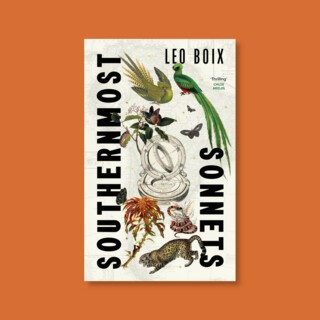
It was only when I started exploring London's suburban northern edges that I really began to love this city. Maybe it’s that it reminds me of where I grew up: whether in London or out in the duller stretches of the Home Counties (my old stomping ground), you find allotments, railway sidings, rec grounds in all suburbs; the kind of unloved bits and pieces celebrated in Michael Symmons Roberts’s and Paul Farley’s excellent Edgelands – all the dreamiest bits of our urban sprawl. Whatever it was, when I moved out to the wilds of Zone 3, I found a London that was mine to explore and get to know, alone and on foot, which is, of course, the best way to get to know anywhere.
If any one book inspired my ambles northwards, it would be the brilliantly mad Scarp by Nick Papadimitriou. The book records a lifetime (in fact, several, various lifetimes) of wandering across the North Middlesex Tertiary Escarpment, and Papadimitriou’s all-encompassing enthusiasm is infectious; he’s a man who can see the joy in everything – even Brent Cross Shopping Centre. The Resonance FM show he made with John Rogers, Ventures and Adventures in Topography, is an excellent introduction to the outer reaches of London. It always opens with the ridiculous, magical statement: ‘Sometimes when I am in certain frames of mind, particularly on very hot days around the North Circular, I can feel time radiating off of pre-molded concrete lintels.' One hot summer’s day I set off on my own three-hour tramp round the North Circular, and did not regret it one bit.
By walking, as opposed to any other way of getting around, you realise just how green the city is. On that wander round the North Circular, I stumbled across its exact opposite: a tiny, hidden nature reserve called Long Lane Pasture, tucked away in an angle between the North Circular and the Northern Line. These places are everywhere, from tiny suburban greens to London’s longest nature reserve; there’s even a campaign to recognise London as a National Park.
My favourite walks in North London though are always following waterways – which in themselves provide long strips of green space throughout the capital. The River Lea (or Lee, or Luye, or Leye) is the obvious one, running from somewhere north of Luton until it meets the Thames at Limehouse, but it’s the smaller ones I love: following the Dollis Brook as it tracks, and then strikes off from, the North Circular (which also takes you close to the eerily wonderful Hampstead Garden Suburb), or the Pymmes Brook, which I discovered on a much-needed lonely post-Christmas wander, and takes in tviews of the brick viaduct at Arnos Grove and the pleasantly scrubby woodland at Monken Hadley.
In the rundown of my All-Time Top Favourite Minor Suburban North London Waterways, though, there’s only one that can take the number one spot: the New River, with which Sir Hugh Myddleton saved us all from death by drinking water. Although it sometimes snakes inaccessibly behind houses, or is buried for stretches under roads, you can more or less follow the whole thing, from its end point in Stoke Newington to its source in Ware (although I’ve never made it past Enfield); and for the most part, it seems as though no one else knows about it – it must be one of the most gloriously deserted walks in all London.
There's plenty of books to guide you around London's hidden rivers - from the practical to the mysterious to the Iain Sinclair - but my favourite guide is the London Sound Survey, a fascinating collection of field recordings made in and around London, which lets you take auditory trips along many of the city's waterways. I defy you to listen to the swoonily gorgeous Hornsey Depot recording and not be instantly entranced by the magic of the suburbs.




